In the first article, Price inflation – The ingredients of inflation, domestic inflation in the USA in 1950-2021 was dissected into eight inflation components: the contribution to domestic inflation of: labour costs, profit costs, depreciation costs, tax costs, interest costs, rental costs, net import costs and other costs (together indicated as GDI+ inflation) This dissection was based on BEA NIPA tables 1.1.5, 1.1.6, 1.10, 1.14, 1.17.5 and 1.17.6 and is shown in the following graph.
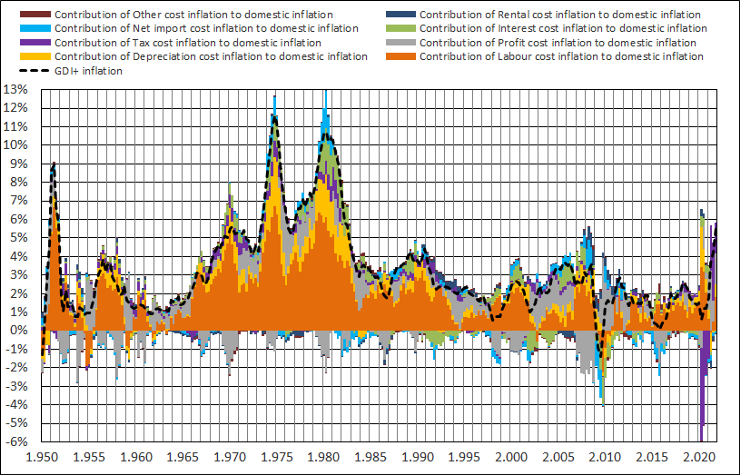
These contributions are summarized in the following table (averages 1950 – 2021).
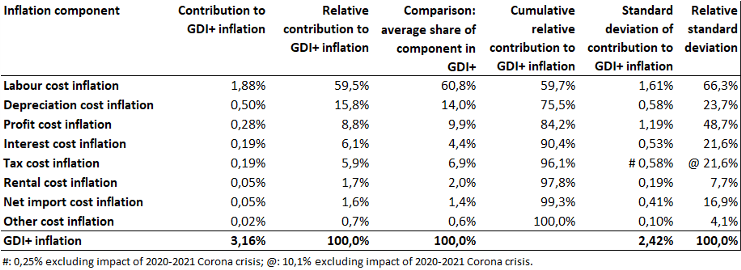
The contribution of labour cost inflation is by far the most important item, accounting for c. 60% of total domestic inflation in the US. In the following graph, the development of this component for the period 1950 – 2021 is shown.
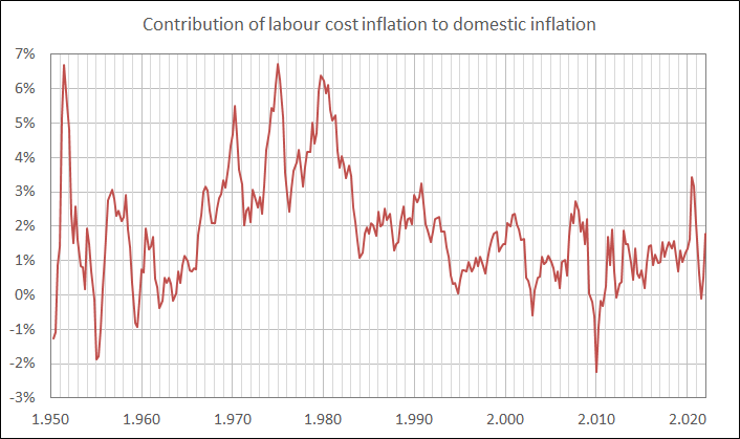
Components of the contribution of labour cost inflation to domestic inflation
In the previous article, the contribution of labour cost inflation to domestic inflation (GDI+ inflation) was calculated as follows:
Labour cost inflation = Ŵt = ( Wt / yt – Wt-1 / yt-1 ) / ( Wt-1 / yt-1 ) (1)
Contribution of labour
cost inflation to domestic inflation = Ŵt · SWt-1 (2)
With Ŵ domestic labour cost inflation, W aggregate nominal domestic labour costs, y real domestic product and SW, share of aggregate nominal domestic labour costs in gross domestic income plus net import costs (further indicated as GDI+).
And as:
W = w · L (3)
y = p · L (4)
With W: aggregate nominal domestic labour costs, w: average nominal hourly wage, L: aggregate hours worked, y: aggregate real product and p: average labour productivity per hour worked.
This means that:
Ŵt = ( wt · Lt / pt · Lt – wt-1 · Lt-1 / pt-1 · Lt-1 ) / ( wt-1 · Lt-1 / pt-1 · Lt-1 ) (5)
= Ŵt = ( wt / pt – wt-1 / pt-1 ) / ( wt-1 / pt-1 ) (6)
And thus the contribution of labour cost inflation to domestic inflation is equal to:
Ŵt · SW,t-1 = ( wt / pt – wt-1 / pt-1 ) / ( wt-1 / pt-1 ) . SW,t-1 (7)
Which means that the contribution of labour cost
inflation to domestic inflation is determined by the development of three components,
which are:
1. the development of the average hourly wage (wage inflation) in the current period,
2. the development of labour productivity per hour worked (labour productivity growth) in the current
period, and
3. the labour cost share in GDI+ in the previous period (labour cost share).
The third component, the labour cost
share in GDI+, was presented in the first article. But as far as I know, there
is no data available for the US economy as a whole for the other two components,
which are wage inflation and labour productivity growth. However such data is
available for the US business sector, or can be derived, from the following data,
provided by the U.S. Bureau of Labor Statistics:
- OPHPBS:
Business Sector: Labor Productivity (Output per Hour) for All Employed Persons,
Index 2012=100, Quarterly, Seasonally Adjusted;
- ULCBS: Business Sector: Unit Labor Costs for All Employed Persons, Index 2012=100, Quarterly,
Seasonally Adjusted.
The first series can be used for the calculation of labour productivity growth, and both series together can be used for the calculation of wage inflation:
Wage inflation = Unit labor costs
growth * Labor productivity growth (8)
In the following graphs, these three
components are shown, in the first 3 graphs individually, and in the 4 graph
together.
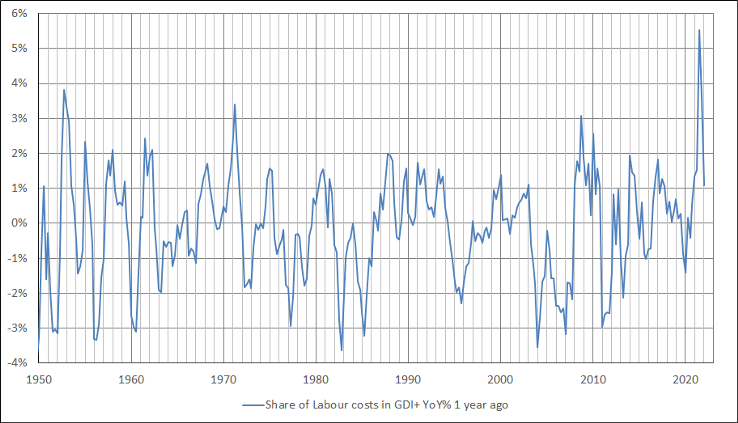
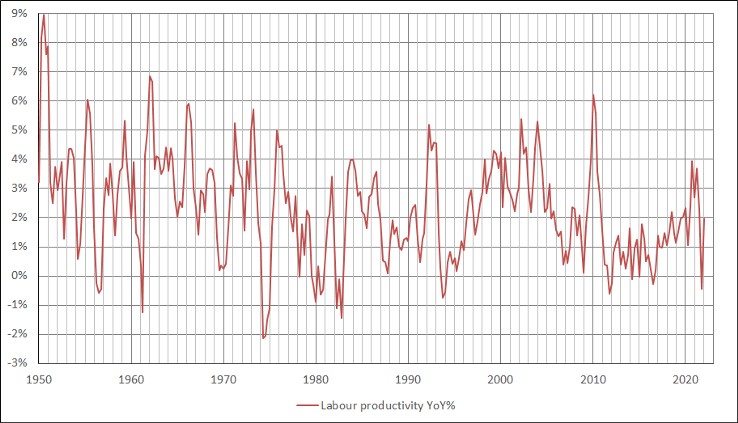
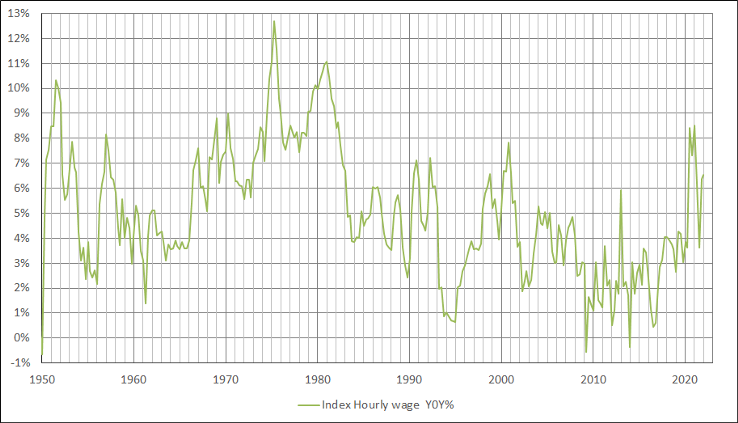
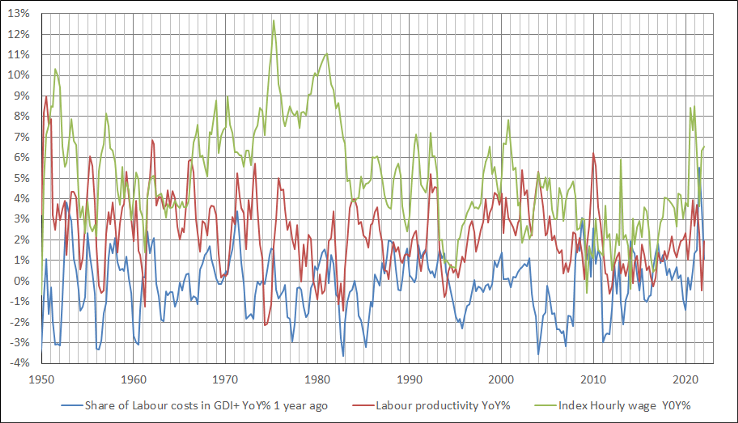
In the following article, the development of the first of the three components, the average hourly wage (wage inflation), will be further discussed.
© Anton van de Haar - August 2022